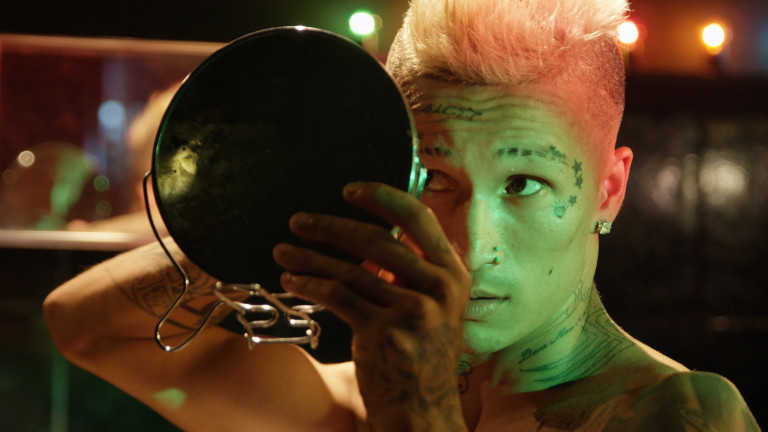We are SUPER proud of our alumna Bárbara Wagner (DAI, 2011) and cannot wait to visit the Stedelijk Museum in Amsterdam where she, together with her partner Benjamin de Burca presents YOU ARE SEEING THINGS. The triptych of amazing videos by the Brazilian duo will be on show from March 16 till June 16.
YOU ARE SEEING THINGS is a triptych of three videos by the Brazilian artist duo Wagner & De Burca. These three short, narrative works blend fiction and documentary into a form with echoes of the musical genre. Through music, dialogues and dance the artists evoke the complex interconnectedness in Brazilian popular culture.
This spring at the Stedelijk Museum the Brazilian artist duo Wagner & De Burca present YOU ARE SEEING THINGS, a triptych of their videos Faz Que vai / Set To Go (2015), Estás Vendo Coisas / You Are Seeing Things (2016) and Terremoto Santo / Holy Tremor (2017). These three short, narrative works blend fiction and documentary into a form with echoes of the musical genre. Through music, dialogues and dance the artists evoke the complex interconnectedness in Brazilian popular culture of class, gender, race, religion and the economy.
DO-IT-YOURSELF CULTURE
On display at the Stedelijk for the first time in this interrelated form, they bear witness to the powerful do-it-yourself culture in Northeast Brazil that is helping to shape a new collective identity through new music and dance cultures, and emergent religious movements. Part scripted, part documentary, these musical film collages with a non-linear narrative structure are as hybrid as the communities they portray. Notably, this artist duo has been selected to represent Brazil at this year’s Venice Biennale.
More than half the population of Northeast Brazil is of partly African heritage, and the region’s music and dance culture is rooted in rebellion against colonialism and slavery. Wagner & de Burca’s videos show how the local young people appropriate these expressive forms to respond to officially sanctioned culture and the commercial mainstream. Faz Que Vai, for example, centers around Frevo, a Capoeira-style dance involving small umbrellas, which originated in Pernambuco state: while the tourist industry promotes Frevo as traditional heritage, the transgender community has transformed it into a subversive and self-assertive Vogueing style. In Estás Vendo Coisas we see how the traditional and contemporary Brega music subculture, with its origins in local communities, is cutting its own unique path to a wider audience by organizing parties and posting self-produced music videos on social media. And Terremoto Santo shows how the tumultuous rise of the Protestant evangelical church in Brazil is offering young people an unexpected opportunity to build a financially stable existence for themselves through gospel music.
Stedelijk curator Martijn van Nieuwenhuyzen points out that “The work of Wagner & De Burca has taken on a new and unforeseen sense of urgency in the light of the current political climate in Brazil. The new government’s policies have far-reaching implications for the position of people of color, favela dwellers, the LGBT community, and other vulnerable groups – and it is precisely these people who are central to Wagner & De Burca’s work, which is developed in close collaboration with them.”
https://www.stedelijk.nl/en/exhibitions/you-are-seeing-things
ABOUT THE ARTISTS
Bárbara Wagner (b. 1980, Brasília) and Benjamin de Burca (b. 1975, Munich) live and work in Recife, Brazil, having met in 2011 while Wagner was studying at the Dutch Art Institute in Arnhem. As a duo they have made six videos / video installations, and their work has been shown at the Museum of Contemporary Art Detroit; Wexner Centre for the Arts, Columbus, Ohio; Art Gallery of York University, Toronto; Solo Shows, São Paulo; and Fortes D’Aloia & Gabriel, São Paulo. Museo Tamayo in Mexico City is holding a retrospective exhibition of their work in spring 2019.
The exhibition You Are Seeing Things – Three Films by Bárbara Wagner & Benjamin de Burca is made possible in part by the support of the Prince Claus Fund.

